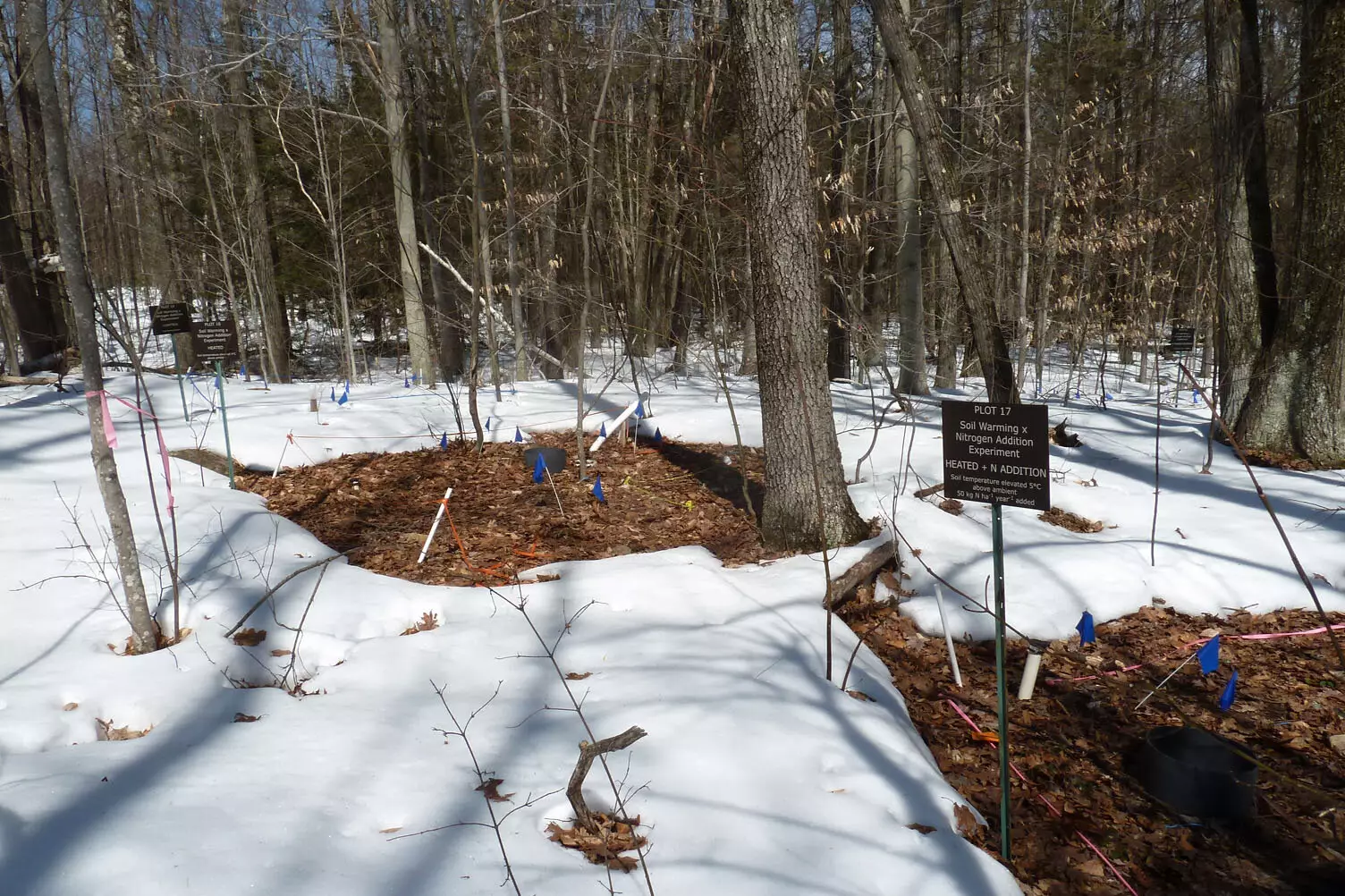New England’s forests are at a critical juncture, grappling with the dual challenges posed by climate change and increasing nitrogen deposition resulting from human activities. For years, scientists have examined the individual impacts of these stresses, but a groundbreaking study from the University of New Hampshire (UNH) illuminates the complex interplay between rising temperatures and elevated nitrogen levels. This research offers a more nuanced understanding of how these factors interact within forest ecosystems, revealing potential pathways for enhanced carbon storage in soil—a significant aspect of climate change mitigation.
In the recent study published in *Nature Ecology & Evolution*, researchers utilized a robust 16-year dataset from the Harvard Forest Long-Term Ecological Research site located in Massachusetts. By simultaneously warming the soil by 5°C and introducing nitrogen at a rate of five grams per square meter annually, the researchers discovered intriguing results. Contrary to earlier models predicting significant carbon loss due to climate change, the combination of warmer temperatures and increased nitrogen actually stabilized carbon storage levels in the soil. This stability can largely be attributed to improved belowground plant inputs, particularly through the natural cycle of root turnover.
The findings represent a pivotal shift in understanding forest responses to environmental changes. As noted by Melissa Knorr, a research supervisor at UNH, this study is particularly groundbreaking because it examines the effects of multiple global change pressures in tandem, rather than in isolation. This integrated perspective is essential, especially in New England, where nitrogen levels have historically been elevated and temperatures are rising at a faster rate than in many other parts of the United States.
The Role of Plant Interactions in Carbon Dynamics
Exploring further, researchers such as Serita Frey, a professor within UNH’s Natural Resources and the Environment department, highlight the instrumental role of plant interactions in maintaining soil carbon levels. The natural process of root turnover—the cycle in which plant roots grow, die, and decompose—contributes significantly to carbon storage. Enhanced plant activity, spurred by increased nitrogen and warmer temperatures, allows forests to input more carbon into the soil.
This synergistic relationship between plant growth and nutrient availability underscores the intricate web of interactions that exist within forest ecosystems. While microbial activity naturally breaks down organic matter, releasing CO₂ into the atmosphere, these processes are offset by the carbon contributions from thriving plant roots. As such, this research challenges earlier predictions that solely focused on the adverse effects of warming, by revealing how interactions among organisms can lead to positive outcomes for carbon retention.
In the past century, New England has experienced a notable increase in average temperatures, a trend that is likely to accelerate with ongoing climate change. Despite indications that nitrogen deposition rates are falling, they remain alarmingly high, significantly exceeding pre-industrial levels. This excess nitrogen, often introduced via precipitation, poses risks to forest health and ecosystem integrity. The findings from the UNH study call attention to the need for understanding plant-soil interactions, which are essential for managing and preserving forest ecosystems as they serve vital functions in carbon sequestration.
As a result of these insights, there is greater potential for informing conservation policies aimed at enhancing forest resilience and sustainability. By appreciating how New England’s forests can counteract carbon loss through plant-soil dynamics, stakeholders can devise strategies that bolster both carbon sequestration capabilities and overall forest health.
This recent exploration of the combined effects of climate change and nitrogen deposition on New England’s forests serves as a clarion call for the scientific community. It emphasizes the necessity of a holistic approach when investigating ecological responses to environmental pressures. By illuminating the complexities of plant-soil interactions, this research provides a more comprehensive understanding of forest resilience.
Going forward, continued investigation into the interplay of various environmental factors can yield further insights into management strategies that would not only help combat climate change but also promote sustainable forest ecosystems. The work completed at UNH makes a definitive case for a multi-faceted approach to ecological research, paving the way for future studies that can build on these findings and address the ongoing challenges faced by forests worldwide.


Leave a Reply